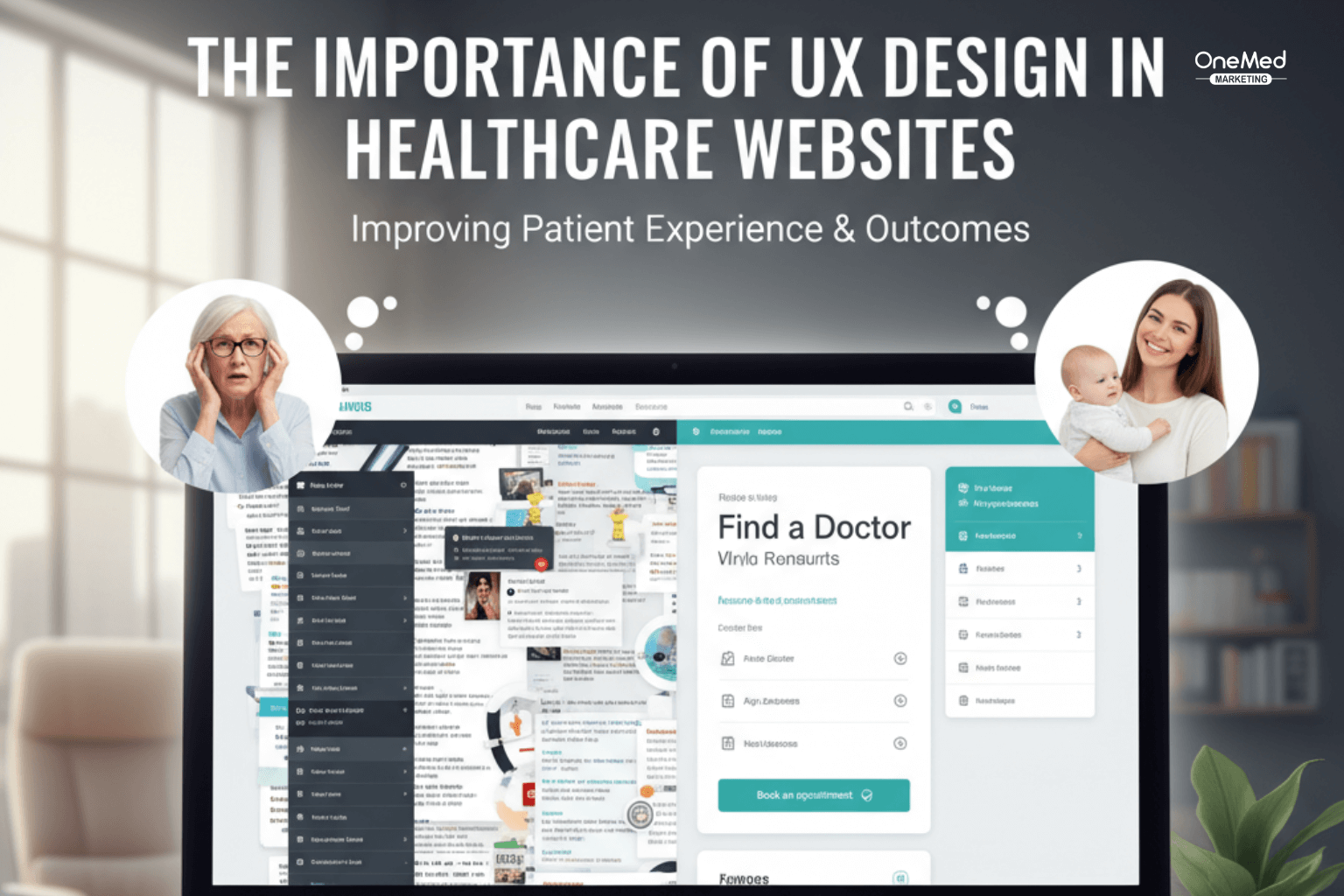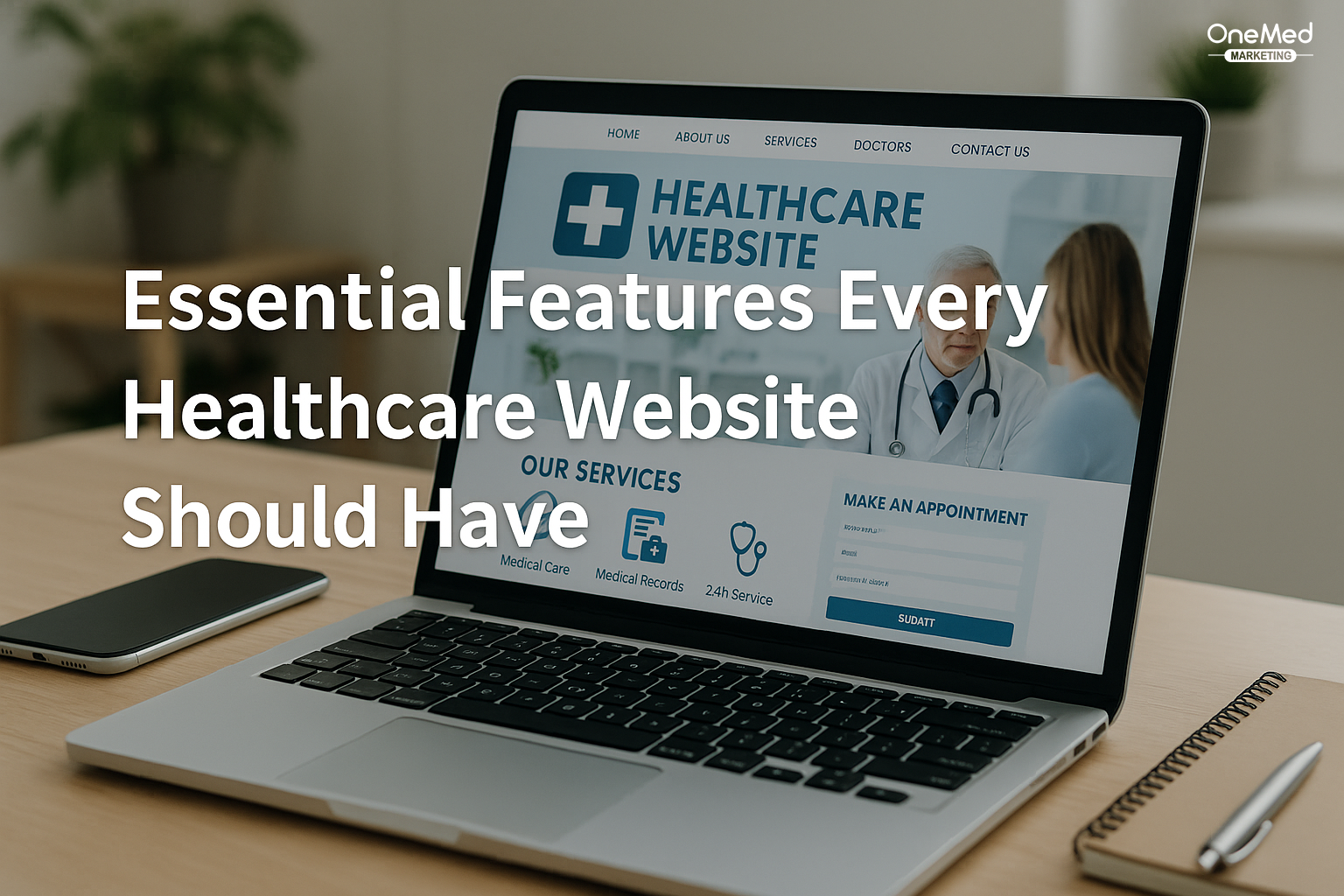- info@onemedmarketing.com
- 4th Floor, Nemours Building, 1007 North Orange St. , Wilmington, DE 19801, United States

How Infographics Improve Patient Education and Engagement
Healthcare information can be overwhelming. Patients often face long explanations, heavy paperwork, or complex instructions that are hard to follow. Even when providers explain things carefully, patients may forget details once they leave the clinic. This is where visual communication makes a real difference.
Infographics give patients a way to see information clearly and remember it. They use simple visuals, step-by-step instructions, and plain language to make learning easier. For providers, infographics are a practical tool to educate, engage, and build stronger relationships with patients.
In this blog, we will cover the following topics:
- What Are Infographics in Healthcare?
- Why Infographics Improve Patient Education
- The Role of Infographics in Patient Engagement
- Key Types of Infographics for Healthcare Practices
- Benefits of Infographics for Providers and Patients
- Best Practices for Creating Patient-Friendly Infographics
- Challenges and Mistakes to Avoid
- The Future of Infographics in Patient Education
- Conclusion
- Frequently Asked Questions
What Are Infographics in Healthcare?
Definition and examples in a medical setting
Infographics are visual tools that combine text, graphics, and design to present information in a simple way. In healthcare, they can show patients how to prepare for surgery, explain a treatment plan, or outline steps for preventive care.
Why visuals work better than text-heavy documents
Most people process visuals faster than text. A long document full of medical terms can be intimidating, but an infographic with icons and short points is easier to understand and remember.
Why Infographics Improve Patient Education
Breaking down complex medical terms into simple visuals
Medical terms can confuse patients. Infographics replace jargon with clear visuals. For example, instead of describing “hypertension,” an infographic might show how high blood pressure affects the heart using simple diagrams.
Helping patients remember instructions more clearly
Patients often forget instructions given during visits. A handout with visuals about wound care or medication schedules helps them recall what they need to do at home.
Supporting different learning styles
Not every patient learns by reading. Some learn better by seeing, and others by doing. Infographics appeal to visual learners and make information more accessible to everyone.
The Role of Infographics in Patient Engagement
Encouraging patients to take an active role in their care
When patients understand information, they are more likely to take action. Infographics encourage them to follow preventive steps, attend screenings, or stick with treatment plans.
Making health topics more approachable and less intimidating
A page of text about diabetes can feel overwhelming. An infographic that explains diet, exercise, and medication in simple steps makes the condition feel more manageable.
Using visuals to spark conversations between patients and providers
Infographics can also be used during visits. A provider may show a patient an infographic about cholesterol management, which makes it easier to ask questions and start a meaningful discussion.
Key Types of Infographics for Healthcare Practices
Step-by-step care instructions
Infographics can guide patients through processes such as pre-surgery preparation or post-treatment care.
Preventive care reminders
Practices can use infographics to remind patients about flu shots, cancer screenings, or annual checkups.
Condition management guides
Chronic conditions like diabetes or hypertension require ongoing care. Infographics can show patients how to monitor symptoms and stick to lifestyle changes.
Billing and insurance explanation infographics
Many patients struggle with billing or insurance details. A simple infographic showing terms like deductible, copay, and coinsurance makes the process less confusing.
Benefits of Infographics for Providers and Patients
Better understanding of treatment and procedures
Patients who see step-by-step visuals are less likely to misunderstand instructions.
Improved compliance with medical advice
Clear instructions mean patients are more likely to take medications correctly and follow through with care plans.
Reduced confusion about billing and insurance
Explaining coverage and payment with visuals lowers frustration and prevents billing disputes.
Stronger trust between providers and patients
When providers take time to explain in simple ways, patients feel respected and valued. This builds loyalty and long-term relationships.
Best Practices for Creating Patient-Friendly Infographics
Using plain language with no jargon
Patients should never feel lost reading an infographic. Keep wording short and simple.
Adding icons, charts, and real-life examples
Icons and charts explain ideas faster than paragraphs. Examples that tie to daily life help patients connect with the message.
Keeping designs simple and easy to read
Too many colors or details can overwhelm patients. A clean design with a few key points is more effective.
Making infographics mobile-friendly for online use
Most patients view health content on their phones. Infographics should load quickly and be easy to read on small screens.
Challenges and Mistakes to Avoid
Overloading with too much data or text
An infographic should highlight only the most important details. Too much information defeats the purpose.
Using colors or layouts that confuse instead of clarify
Bright colors or complicated layouts can distract from the message. Stick with simple, professional designs.
Not updating content as medical guidelines change
Outdated information can hurt patient trust. Infographics should be reviewed and updated regularly.
The Future of Infographics in Patient Education
Combining infographics with video and interactive tools
In the future, static infographics will often be paired with short videos or interactive tools for deeper learning.
Using infographics in telehealth and patient portals
As telehealth grows, practices can share infographics directly through patient portals or during virtual visits.
Personalized infographics tailored to individual patients
With new technology, providers may soon create infographics customized to each patient’s health condition or treatment plan.
Conclusion
Patient education works best when it is clear, simple, and easy to remember. Infographics give providers a powerful tool to break down complex information, reduce confusion, and improve patient engagement. They help patients take an active role in their health, follow treatment plans correctly, and feel more comfortable discussing their care.
For healthcare practices, investing in patient-friendly visuals builds trust and strengthens relationships. As patient expectations continue to grow, infographics will remain one of the most effective ways to connect, educate, and engage in a meaningful way.
Frequently Asked Questions
1. What are infographics in healthcare?
Infographics are simple visuals that explain health information using charts, icons, and short text. They make medical topics easier for patients to understand.
2. How do infographics help patients learn better?
Infographics break down complex terms into plain language and visuals. This helps patients remember instructions and follow care plans more accurately.
3. Can infographics improve patient engagement?
Yes. Infographics make health topics less intimidating and encourage patients to take part in their care. They often spark questions and conversations with providers.
4. What types of healthcare topics work best as infographics?
They are especially useful for step-by-step care instructions, preventive reminders, chronic condition management, and explaining billing or insurance terms.







0 Comments
Leave a Comment